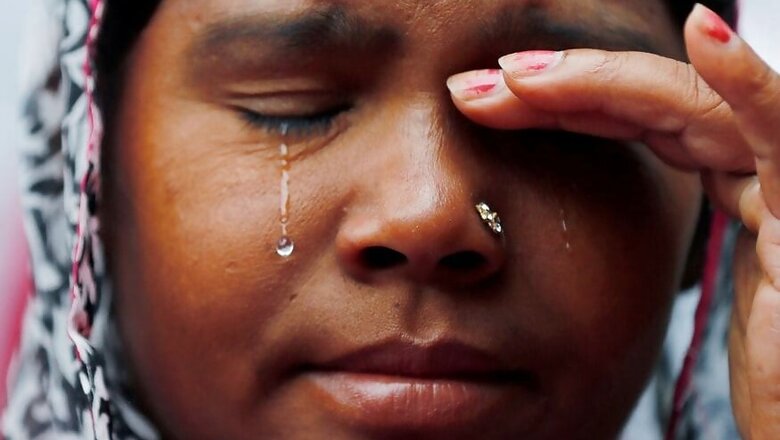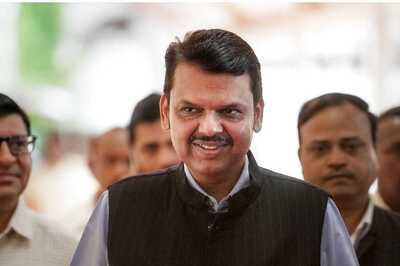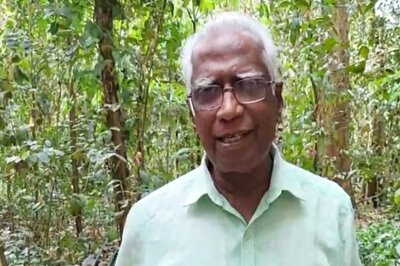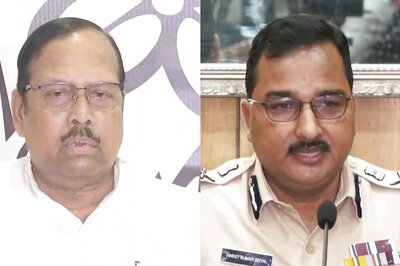
views
Research has established that when media i.e. newspapers, film, and television report suicidal deaths, additional suicides may result by virtue of contagion or copy-cat effects. It also shows that an increased number of suicides result from media accounts of suicide which romanticize or dramatize the description of suicidal deaths.
Suicide is generally considered as the most tragic way of ending one’s life. It poses a major challenge to civil society. Worldwide, there is an estimated 850,000 deaths due to suicide and well beyond 15 million suicide attempts every year. Suicidal behaviour is now acknowledged as a major global public health problem.
It hits particularly the young, and worldwide deaths from suicide are one of the top three causes of deaths among people aged 15-35 years, for both males and females. Social scientists have discovered that the majority of people who consider suicide are ambivalent. They are not sure that they want to die. One of the key factors that leads a vulnerable individual to suicide could be publicity about such deaths in the media.
In present era, when suicide involving young have assumed another dimension of political and global terror, identification and efficient interventions for suicidal behaviour pose a more daunting challenge before societies across the nations. The role of media too has come under closer scrutiny as it was often seen as glorifying or legitimatizing suicides for a ‘cause’.
There is a paucity of media research on impact of media on suicide in India. However, in western academic sphere, the existence of ‘suicide contagion’ is ably recognized by all those working in the field of mental health, social sciences and mass media.
Suicide contagion implies the exposure to suicide or suicidal behaviours within one's family, one's peer group, or through media reports of suicide and can result in an increase in suicide and suicidal behaviours.
Media studies conducted mostly in United States, UK etc. have documented that the risk for suicide contagion as a result of media reporting can be minimized by factual and concise media reports of suicide. These research findings have shown that reports of suicide should not be repetitive, as prolonged exposure can increase the likelihood of suicide contagion. However, suicide risk can be minimized by having family members, friends, peers, and colleagues of the victim evaluated by a mental health professional.
The media constantly provides opportunity for transmission of suicide contagion. This means of influence is potentially more far reaching than direct person-to-person propagation.
Suicide contagion thus, should be viewed within the larger context of behavioural contagion, which has been described as the situation in which the same behaviour spreads quickly and spontaneously through a group. Behavioural contagion has also been conjectured to influence the transmission of conduct disorder, drug abuse, and teenage and pregnancy.
According to behavioural contagion theory, an individual has a pre-existing motivation to perform a particular behaviour, which is offset by an avoidance gradient, so as that an approach-avoidance conflict exists. As media and violence studies have shown, the coverage of suicides in the media may serve to reduce the avoidance gradient —the observer’s internal restraints against performing the behaviour.
There is an ample amount of evidence in western academic circles to show that the magnitude of the increase in suicidal behaviour after media coverage is related to the amount of publicity given to the story and the prominence of the story. This “dose-response” relationship is a key factor of any celebrity status of the suicide victim.
In the context of media and suicide, we need to look at the ‘Cultivation theory’ which argued that humans cultivate understandings of the world around them through indicators found within television programming. Concerning the relationship between media portrayal of suicide and suicidal behaviour, the evidence has established a causal association between nonfictional media reporting of suicide and suicidal behaviour, and between fictional media portrayal and actual suicide.
These studies have been based on social learning theory and emphasized on the effects of television viewing on the attitudes rather than the behaviour of viewers. According to this theory, most human behaviour is learned observationally through modelling.
Imitative learning is influenced by a number of factors, including the characteristics of the model and the consequences or rewards associated with the observed behaviour. Consequences or rewards, such as public attention, may lower behaviour restraints and lead to the disinhibition of otherwise “frowned upon” behaviour.
Cultivation theorists distinguish between ‘first order’ effects (general beliefs about the everyday world) and ‘second order’ effects (specific attitudes, such as to law and order or to personal safety).
The BBC Producers' Guideline in its chapter on Values, Standards and Principles, (2003) has observed, “Suicide is a legitimate subject for news reporting but the factual reporting of suicides may encourage others. Reports should avoid glamorizing the story, providing simplistic explanations, or imposing on the grief of those affected. They should also avoid graphic or technical details of a suicide method particularly when the method is unusual. Sensitive use of language is also important.”
There is a view that censorship practices can be one means by which these messages could be combated.
In psychological terms, it is pertinent to understand the effect of media portrayal of suicide on cognitions, attitude and emotions of an individual. The most common source of information about suicide tends to be media.
Media influences a viewers' arousal state. There has been considerable interest in the role of arousal as a mediator of the link between exposure to media and a particular behaviour. Arousal refers to an energizer of behaviour. It has been found that media exposure not only elevates excitation, it also maintains a particular level of pre-exposure arousal. Exposure to media violence is assumed to affect suicidal tendency through emotional arousal.
Recommendations for Media
In the context of the substantial evidence for suicide contagion, some societies tried to work out a “prevention strategy” that sought to educate reporters, editors, and film and television producers about contagion in order to yield media stories that minimize harm. It also took in account the media’s positive role in educating the public about risks for suicide.
Some of these media guidelines are:
* Refer to suicide as a completed suicide, not a successful one.
* Indicate that suicide is most often a fatal complication of different types of mental illness, many of which are treatable.
* Provide information on help lines and community resources.
* Publicize risk indicators and warning signs.
* Do not publish photographs or suicide notes.
* Do not report specific details of the method used.
* Do not give simplistic reasons.
* Do not glorify or sensationalize suicide.
* Do not use religious or cultural stereotypes.
* Do not present suicide as a reasonable way of problem solving.
* Do not portray suicide in a heroic or romantic fashion.
Lastly, suicide should not be reported as unexplainable mystery or in a simplistic way. Suicide is never the result of a single factor or event. It is usually caused by a complex interaction of many factors such as mental and physical illness, substance abuse, family disturbances, interpersonal conflicts and life stressors.
Acknowledging that a variety of factors contributes to suicide would be helpful. Suicide should not be depicted as a method of coping with personal problems such as bankruptcy, failure to pass an examination, relationship failure or sexual abuse.
Note: This news piece may be triggering. If you or someone you know needs help, call any of these helplines: Aasra (Mumbai) 022-27546669, Sneha (Chennai) 044-24640050, Sumaitri (Delhi) 011-23389090, Cooj (Goa) 0832- 2252525, Jeevan (Jamshedpur) 065-76453841, Pratheeksha (Kochi) 048-42448830, Maithri (Kochi) 0484-2540530, Roshni (Hyderabad) 040-66202000, Lifeline 033-64643267 (Kolkata).



















Comments
0 comment